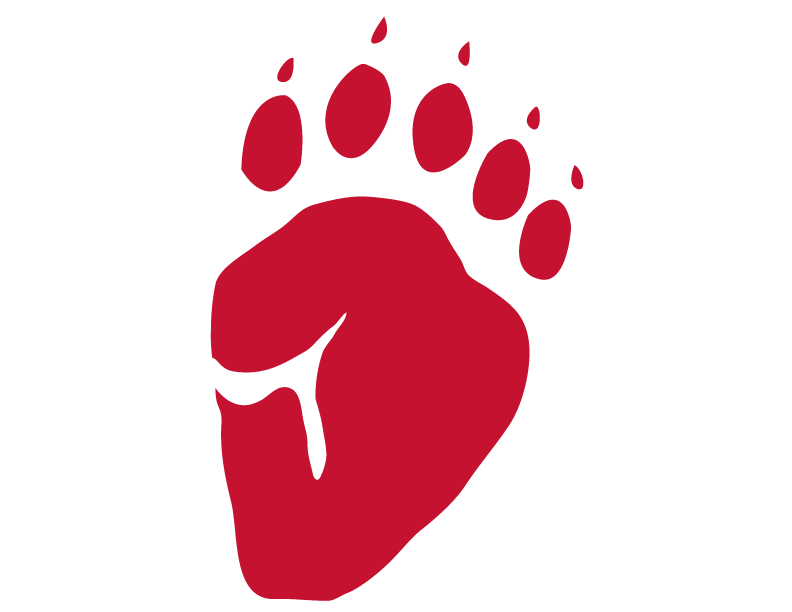“Thelma” and “Louise” are the affectionate nicknames of the two trail cameras on Walking Mountain’s campus. The scenes they capture range from a chickadee’s rear end perched on the camera, to a magpie’s dramatic plumage as it takes flight— oh, and the secret identities of many off-leash dogs (please leash your dogs on our trails!).
Earlier this winter, we noticed some telltale scratches on our aspen trees, loose bits of fur, and large paw prints in the snow. One of the trail cameras captured a mountain lion’s reflective stare in the pitch black night, confirming our hunch. In the summer, a curious black bear decided to take this camera business into its own paws, tearing the camera from its thoughtful placement and leaving us with several shots of the ground and flashes of fur.
 A bobcat takes advantage of the quiet trails on Walking Mountains Avon Tang Campus after students have gone home for the evening.
A bobcat takes advantage of the quiet trails on Walking Mountains Avon Tang Campus after students have gone home for the evening.
Throughout the years, we’ve been able to capture coyotes, elk, foxes, pine martens, bobcats, rabbits, squirrels, and myriad bird species sharing our campus. These glimpses of the valley’s wild residents remind us that nature’s beauty and complexity extend far beyond what we can see out on the trails. No matter how much time we may spend walking the trails, appreciating our natural spaces, or teaching others, there are parts of nature that will always skirt the human gaze. What we can’t see makes data collection like our trail cameras especially important, in addition to being exciting.
Even if you don’t have time or space for your own trail cameras, there are still ways for you to help keep a record of the natural life in our valley. iNaturalist is a community science app used to help identify and record species globally. Records can help scientists understand which species are thriving and gather the data needed to gain support for conservation efforts. Through iNaturalist, you can upload photos from your camera roll of the time you saw a moose while hiking, or you can capture a photo of a magpie in real time. And, don’t worry if you can’t identify the species; other users on iNaturalist can suggest identifications. An ID can become “research grade” when two or more users agree on the identification. With a few clicks, you’re doing community science.

“Very Dangerous Wildlife” A Walking Mountains Summer Camper discovers the trail camera.
Tucked away on the Walking Mountains’ Google Drive is a folder of trail camera photos labeled “VERY DANGEROUS WILDLIFE.” Instead of the moose, mountain lions, or black bears one might expect to find, the folder is full of blurry naturalists’ faces and mischievous grinning children. Though probably a cheeky joke left by someone long before I arrived, there is no doubt some truth to this title. Humans have the potential to be extremely dangerous wildlife by destroying habitats, using natural resources unsustainably, causing anthropogenic climate change, and polluting natural spaces. As animals and a part of nature ourselves, we are wildlife, but we could take notes from some of our trail camera celebrities and make our impact a little harder to see. By leaving no trace when in natural spaces and being mindful recreators, we can successfully be better members of the wildlife community.
Haley Whitley is a naturalist at Walking Mountains who has accidentally snapped plenty of photos of herself while setting the trail cameras.







